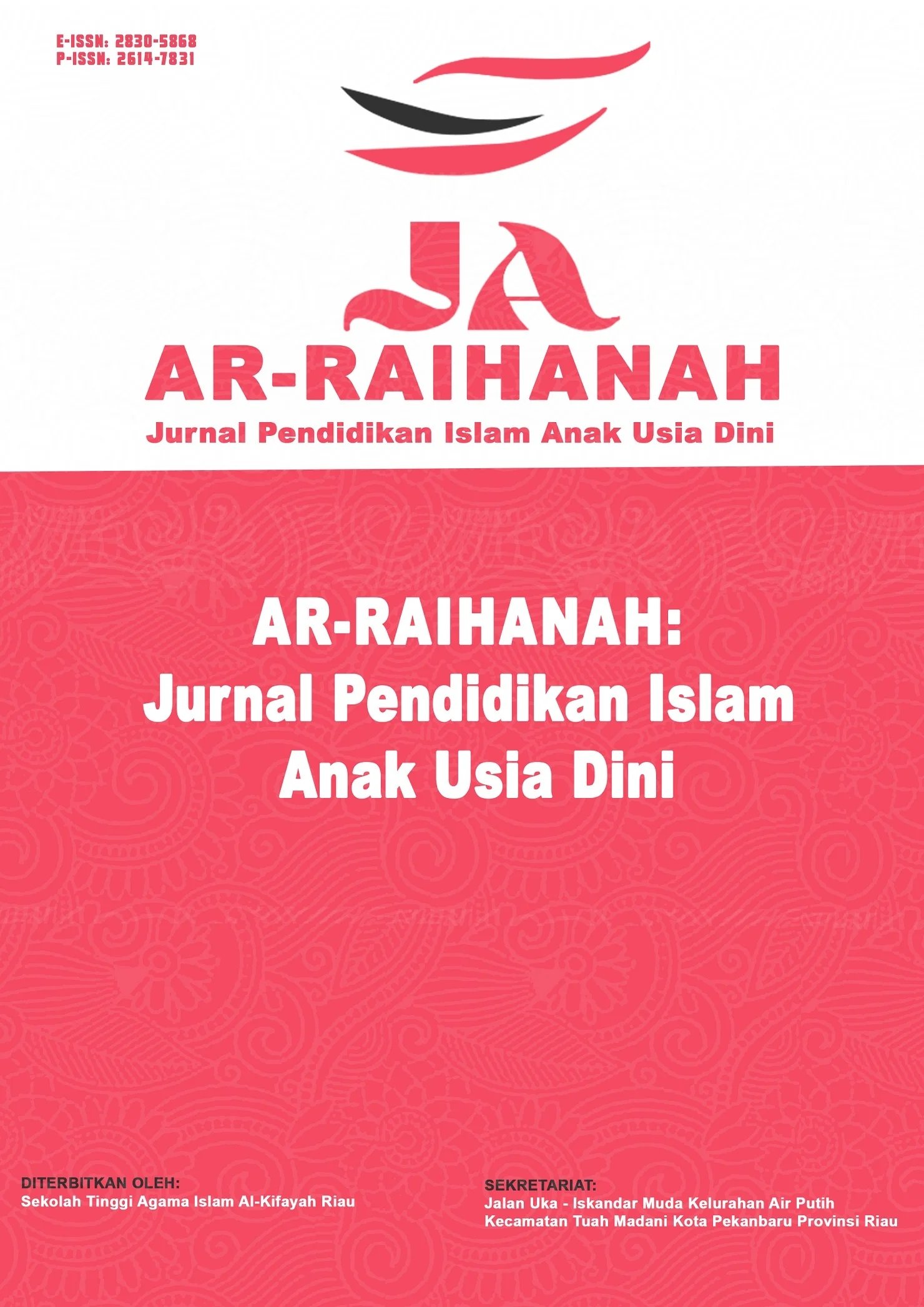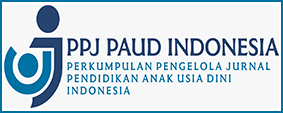Faktor yang Mempengaruhi Perkembangan Tubuh dan Emosi Anak Usia 4–6 Tahun
DOI:
https://doi.org/10.53398/arraihanah.v5i1.641Keywords:
Kata Kunci: emosi; berpusat pada anak: Anak Usia DiniAbstract
This study aims to identify and analyze the factors influencing the physical and emotional development of children aged 4–6 years. It adopts a qualitative descriptive research design. The subjects are early childhood teachers and parents, while the object is the set of factors affecting children's physical and emotional growth. Data were collected through literature reviews, interviews, and observations, and analyzed thematically. The findings reveal that emotional development in early childhood is significantly influenced by an interplay of biological factors (genetics, hormones, temperament), psychosocial elements (parenting, communication, social relationships), and environmental conditions (home, school, and culture). Physical development, such as muscle growth and motor skills, also contributes to the formation of self-concept and emotional regulation. The study concludes that family, educators, and social environments must provide holistic support to ensure balanced physical and emotional development in young children
References
Berk, L. E. (2018). Development through the lifespan (7th ed). Pearson Education. Goleman, D. (1995). Emotional intelligence: Why it can matter more than IQ. Bantam Books.
Berk, L. E. (2018). Development through the lifespan (7th ed.). Pearson Education.
Braun, V., & Clarke, V. (2021). Thematic analysis: A practical guide. SAGE Publications.
Bronfenbrenner, U., & Morris, P. A. (2006). The bioecological model of human development. In W. Damon & R. M. Lerner (Eds.), Handbook of child psychology (6th ed., Vol. 1, pp. 793–828). Wiley.
Bronfenbrenner, U., & Morris, P. A. (2006). The bioecological model of human development. In W. Damon & R. M. Lerner (Eds.), Handbook of child psychology (6th ed., Vol. 1, pp. 793–828). Wiley.
Campbell, S. B., Perry, K. E., & McDowell, D. J. (2019). Gender differences in the social-emotional development of children. Child Development Research, 2019, 1–12. https://doi.org/10.1155/2019/321432
Creswell, J. W., & Poth, C. N. (2018). Qualitative inquiry and research design: Choosing among five approaches (4th ed.). SAGE Publications.
Denham,S. A., Blair, K. A., DeMulder, E., Levitas, J., Sawyer, K., Auerbach-Major, & Queenan, P. (2003). Preschool emotional competence: Pathway to social competence? Child Development, 74 (1), 238-256.
Harter, S. (2012). The construction of the self: Developmental and sociocultural foundations (2nd ed.). The Guilford Press.
Nowakowski, S., Meliska, C. J., & Martinez, L. F. (2019). Sleep and emotional development in early childhood: Emerging findings and implications. Journal of Sleep Research, 28(2), e12711. https://doi.org/10.1111/jsr.12711
Nowell, L. S., Norris, J. M., White, D. E., & Moules, N. J. (2017). Thematic analysis: Striving to meet the trustworthiness criteria. International Journal of Qualitative Methods, 16(1), 1–13. https://doi.org/10.1177/1609406917733847
Papalia, D. E., Feldman, R. D., & Martorell, G. (2014). Experience human development (12th ed.). McGraw-Hill Education.
Riessman, C. K. (2008). Narrative methods for the human sciences. SAGE Publications.
, R.A. (2014). Stress and shild development. The Future of Children, 24(1), 41-
Safnita, T., Akip, M., Mukhlisin, M., Kardinus, W. N., Bhoki, H., Harahap, A. S., Indriani, N., Putri, J. E., Yeni, I., Djalaluddin, A. A., Purnamasari, D. A. F., Kusayang, T., Wahyu, M. R., & Toron, V. B. (2023). Psikologi perkembangan anak usia dini. Literasi Nusantara Abadi Grup.
Safnita, T., Akip, M., Mukhlisin, M., Kardinus, W. N., Bhoki, H., Harahap, A. S., Indriani, N., Putri, J. E., Yeni, I., Djalaluddin, A. A., Purnamasari, D. A F., Kusayang, T., Wahyu, M. R., & Toron, V. B. (2023). Psikologi perkembangan anak usia dini. PT Literasi Nusantara Abadi Grup.
Santrock, J. W. (2017). Child development (14th ed.). McGraw-Hill Education.
Thompson, R. A. (2014). Stress and child development. The Future of Children, 24(1), 41–59. https://doi.org/10.1353/foc.2014.0004
World Health Organization. (2020). Nurturing care for early childhood development: A framework for helping children survive and thrive to transform health and human potential. https://www.who.int/publications/i/item/9789240001459
Downloads
Published
How to Cite
Issue
Section
License
Copyright (c) 2025 Ar-Raihanah: Jurnal Pendidikan Islam Anak Usia Dini

This work is licensed under a Creative Commons Attribution-NonCommercial-ShareAlike 4.0 International License.







.png)




